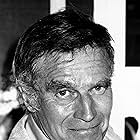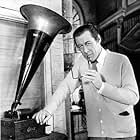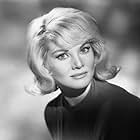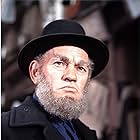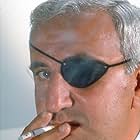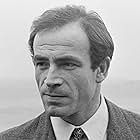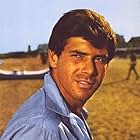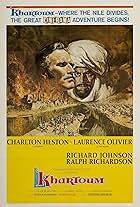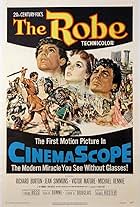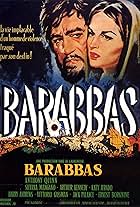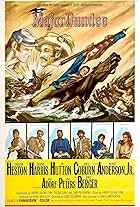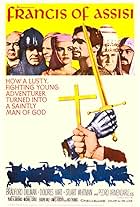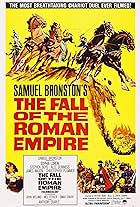VALUTAZIONE IMDb
7,2/10
8260
LA TUA VALUTAZIONE
La vita e i guai di Michelangelo mentre dipingeva la Cappella Sistina su sollecitazione di papa Giulio II.La vita e i guai di Michelangelo mentre dipingeva la Cappella Sistina su sollecitazione di papa Giulio II.La vita e i guai di Michelangelo mentre dipingeva la Cappella Sistina su sollecitazione di papa Giulio II.
- Candidato a 5 Oscar
- 3 vittorie e 9 candidature totali
Fortunato Arena
- Pope's Bodyguard
- (non citato nei titoli originali)
Lars Bloch
- Baron Von Silenen
- (non citato nei titoli originali)
Angelo Boscariol
- Papal Guard
- (non citato nei titoli originali)
Calisto Calisti
- Physician
- (non citato nei titoli originali)
Amerigo Castrighella
- Quarry cart assistant
- (non citato nei titoli originali)
Anita Ceccotti
- Woman Under the Chapel
- (non citato nei titoli originali)
Enrico Chiappafreddo
- Tavern Customer
- (non citato nei titoli originali)
Trama
Lo sapevi?
- QuizIn his 1995 autobiography "In the Arena" Charlton Heston denied that Michelangelo Buonarroti was a homosexual. He also refused permission to use scenes from "The Agony and the Ecstasy" in the 1995 documentary "The Celluloid Closet" because he told the filmmakers he had done a lot of research for his role and could assure them that Michelangelo was not gay.
- BlooperAs shown in the movie, Michelangelo created a flat wooden platform on brackets built out from holes in the wall, high up near the top of the windows. But contrary to what is depicted in the film, he did not lie on this scaffolding while he painted, but painted from a standing position.
- ConnessioniEdited from Prologue: The Artist Who Did Not Want to Paint (1965)
Recensione in evidenza
"The Agony and the Ecstasy" is the story of Michaelangelo and his painting of the Sistine Chapel at the behest of Pope Julius II, a warrior and Patron of the Arts.
But it's really about so much more - the connection between art and the artist, faith, will, and the quest for perfection. Most of all, it's about the complicated relationship of two determined men, Michaelangelo and Pope Julius, which is adversarial and even violent.
The color and scenery in this film are truly beautiful, but I'd love to see a restored print, as I imagine the colors would even be richer.
Charlton Heston is a convincing and strong Michelangelo in what may be his best performance. It's buoyed by the magnificent work of Rex Harrison as Julius II. The two spark one another, and the result is an exciting screen teaming. There is hatred, resentment, a battle of wills, love and admiration between them, the agony and ecstasy of connecting with another, as Diane Cilento says in the film. She plays a woman in love with Michaelangelo. He explains that he cannot love her because of the commitment he has made to his true love, his art. The book hints at Michaelangelo's homosexuality, and it's covered with one line. After Michaelangelo says that he cannot match her feelings, he looks at a sketch of a nude man. "And it's not that either," he says.
Many scenes stick out. The somewhat hokey one in the mountains, when Michaelangelo looks at the heavens and receives his inspiration is nevertheless a gorgeous scene; the incredible scene when Michaelangelo discovers the Pope alone at night with a candle studying the ceiling is perhaps the best, as Michaelangelo explains his concept of God and faith. And the last scene between the two men is unforgettable.
There is a documentary about Michaelangelo and his work before the movie begins. A magnificent film. Don't miss it.
But it's really about so much more - the connection between art and the artist, faith, will, and the quest for perfection. Most of all, it's about the complicated relationship of two determined men, Michaelangelo and Pope Julius, which is adversarial and even violent.
The color and scenery in this film are truly beautiful, but I'd love to see a restored print, as I imagine the colors would even be richer.
Charlton Heston is a convincing and strong Michelangelo in what may be his best performance. It's buoyed by the magnificent work of Rex Harrison as Julius II. The two spark one another, and the result is an exciting screen teaming. There is hatred, resentment, a battle of wills, love and admiration between them, the agony and ecstasy of connecting with another, as Diane Cilento says in the film. She plays a woman in love with Michaelangelo. He explains that he cannot love her because of the commitment he has made to his true love, his art. The book hints at Michaelangelo's homosexuality, and it's covered with one line. After Michaelangelo says that he cannot match her feelings, he looks at a sketch of a nude man. "And it's not that either," he says.
Many scenes stick out. The somewhat hokey one in the mountains, when Michaelangelo looks at the heavens and receives his inspiration is nevertheless a gorgeous scene; the incredible scene when Michaelangelo discovers the Pope alone at night with a candle studying the ceiling is perhaps the best, as Michaelangelo explains his concept of God and faith. And the last scene between the two men is unforgettable.
There is a documentary about Michaelangelo and his work before the movie begins. A magnificent film. Don't miss it.
I più visti
Accedi per valutare e creare un elenco di titoli salvati per ottenere consigli personalizzati
- How long is The Agony and the Ecstasy?Powered by Alexa
Dettagli
Botteghino
- Budget
- 10.000.000 USD (previsto)
- Tempo di esecuzione2 ore 18 minuti
- Colore
- Proporzioni
- 2.20 : 1
Contribuisci a questa pagina
Suggerisci una modifica o aggiungi i contenuti mancanti

Divario superiore
What is the Japanese language plot outline for Il tormento e l'estasi (1965)?
Rispondi









